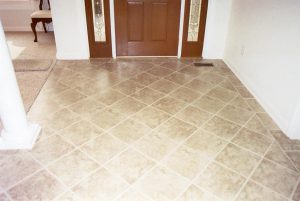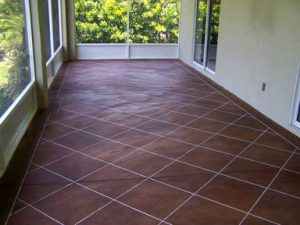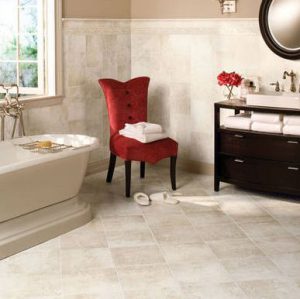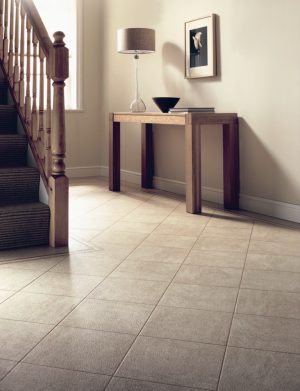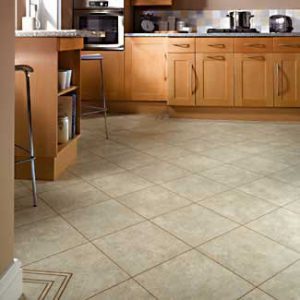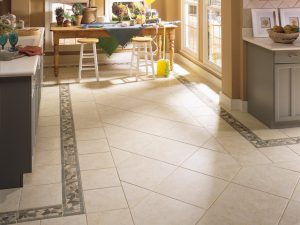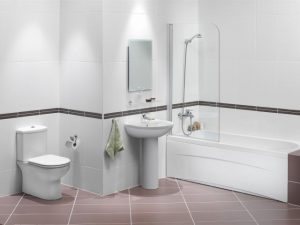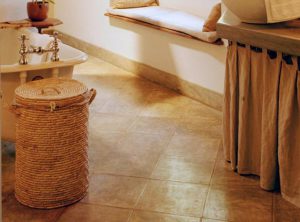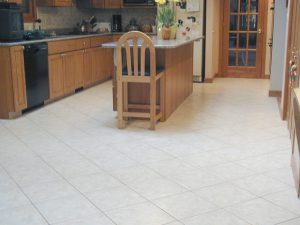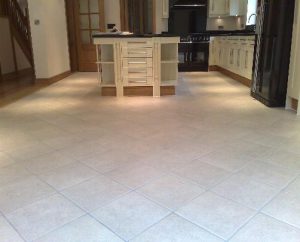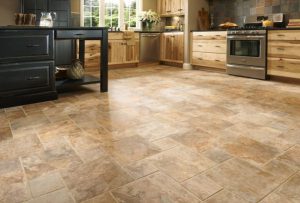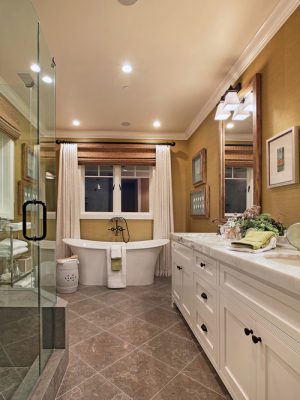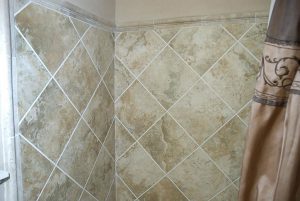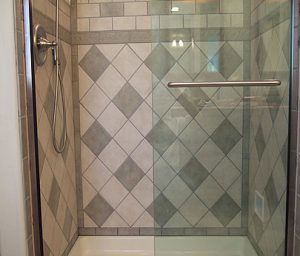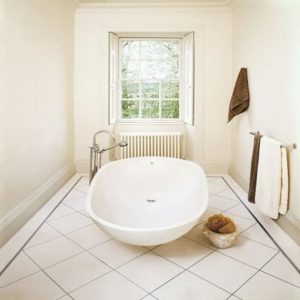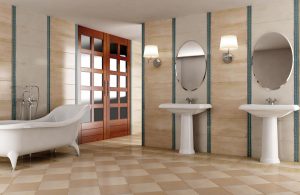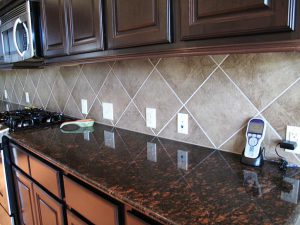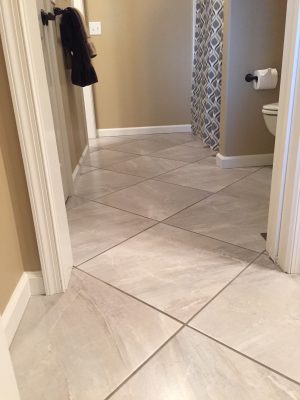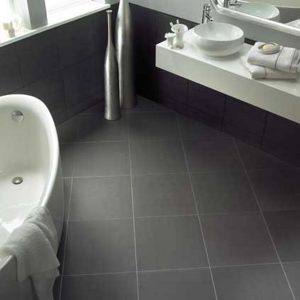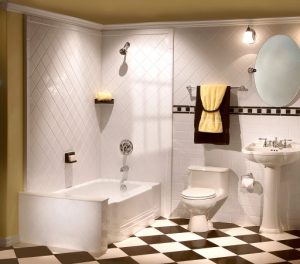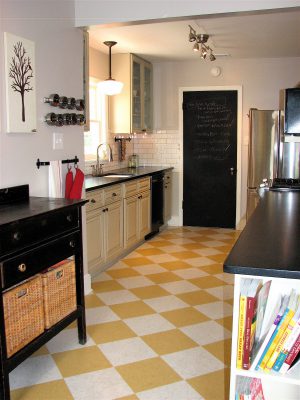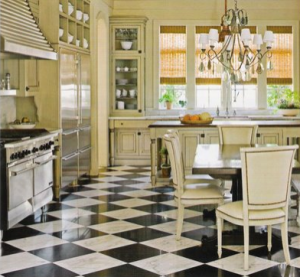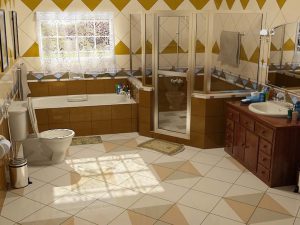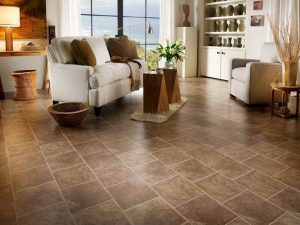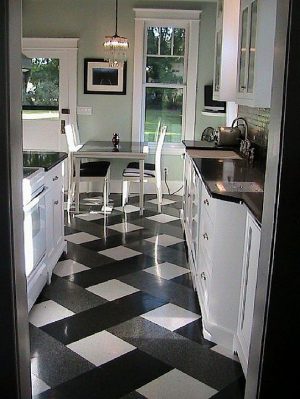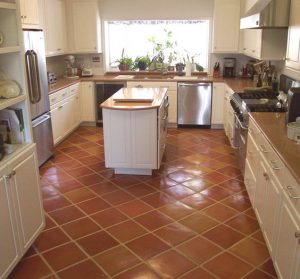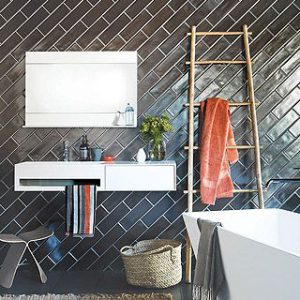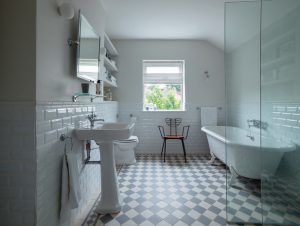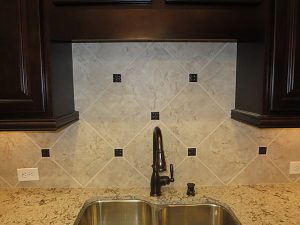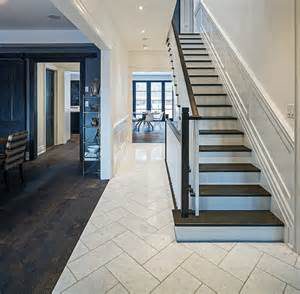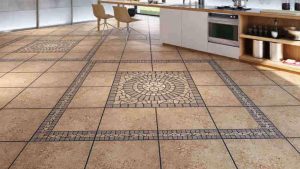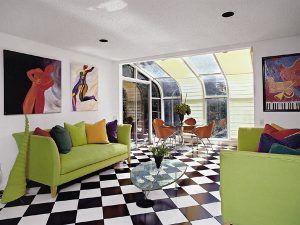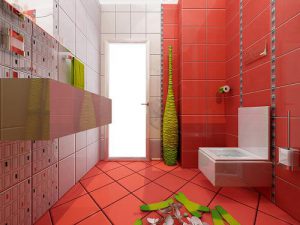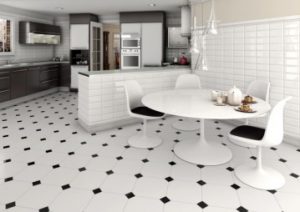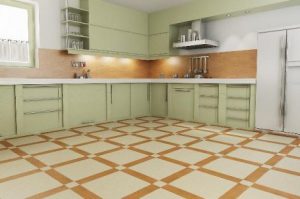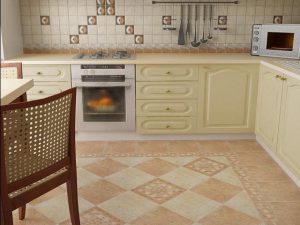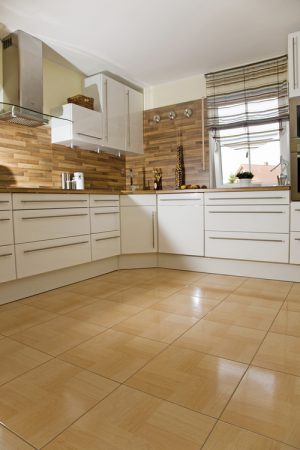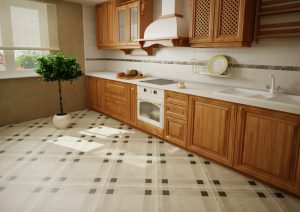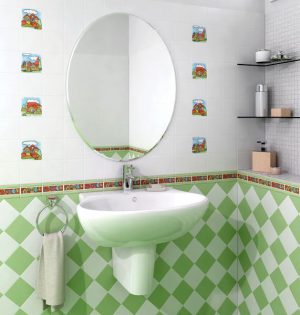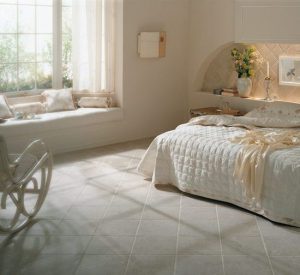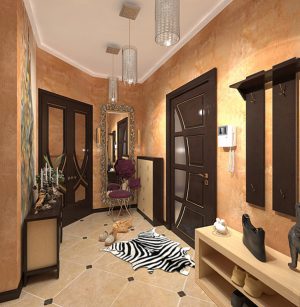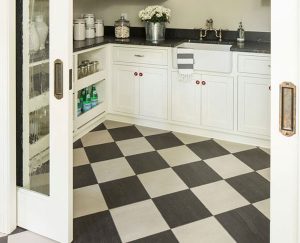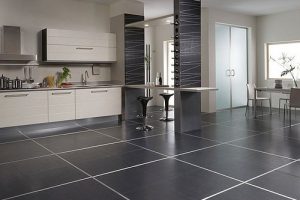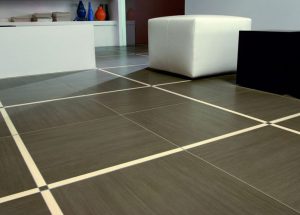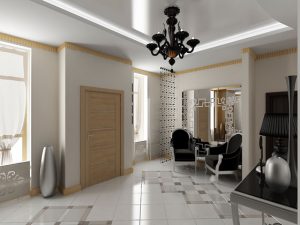In many rooms today, flooring is done with tiles, and there are many reasons for this. This material has the highest technical characteristics and affordable cost.
As a result, you can achieve high reliability and durability of the coating, which will be durable. On sale you can see many different configurations, shapes and methods of decorating the base of this product, so it will not be difficult to choose an option that will suit any style of decoration and will be effectively used in any room. Modern tiled flooring is not the usual simple tiled flooring, which can be seen in almost all office buildings and other buildings. It is possible to create beautiful intricate patterns by mounting this finishing material diagonally.
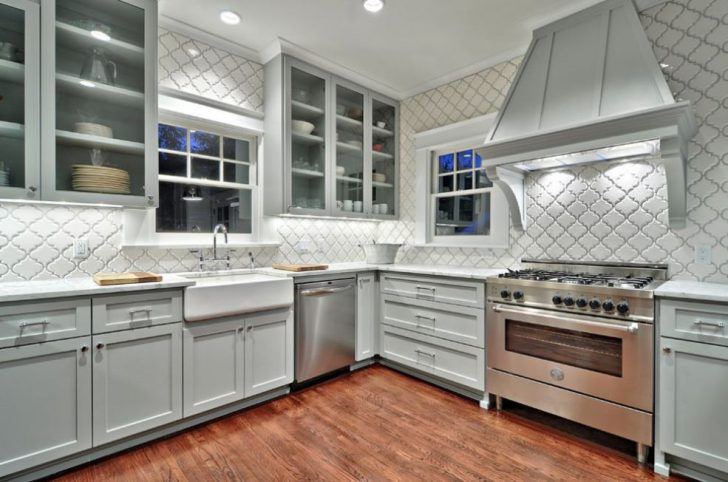
Laying tiles diagonally on the wall
There are many options to diversify the floor area and at the same time not resort to the use of expensive building materials. If you go to any hardware store, you will be offered a huge range of similar products that will be aesthetically attractive and durable.
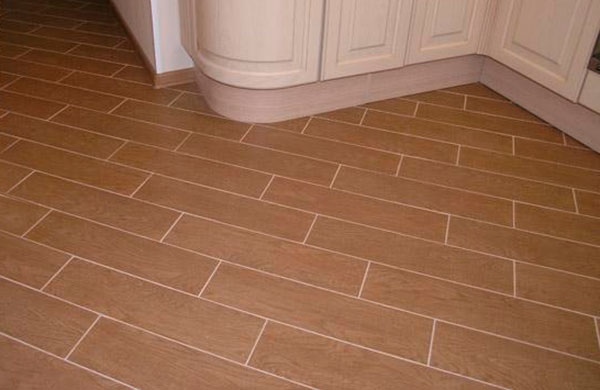
Floor tiles laid diagonally
Diagonal styling - what is it?
This type of tile installation is positioned as the most difficult and at the same time successful option. As a result, it is possible to achieve an aesthetically beautiful and durable floor covering from a material familiar to everyone. Today we will talk about how you can effectively decorate the floor with tiles, define the main features of this method of laying it, and also talk about the features of a number of works. At the initial stage, you need to clearly remember what a floor finished with this material should be.
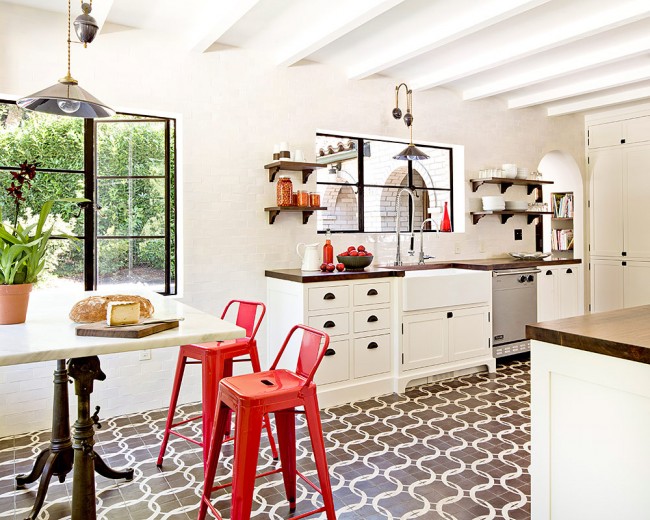
Effective diagonal tiling
Diagonal laying is an unremarkable rectangular-shaped rows that are deployed exactly 45 degrees relative to all walls of the room. In most cases, builders use square-shaped tiles, as it is much more convenient to work with it. You can also choose a monophonic type of finish, which will protect yourself from the selection of a pattern at the stage of installation of each individual link.
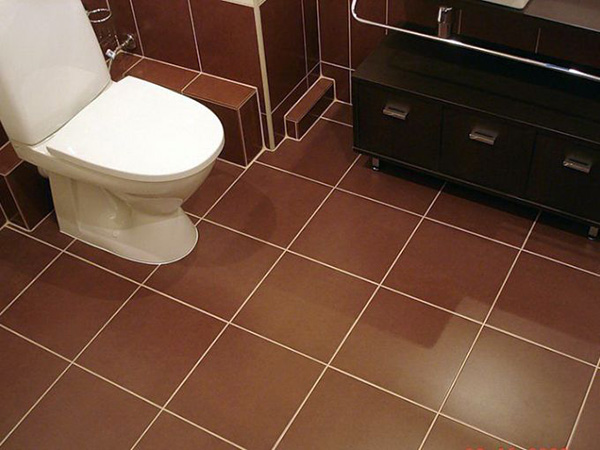
Laying plain tiles eliminates the need to select a pattern
Colored elements are most often located in the central part, but trimmings are ideal for finishing the edges of the room. This solution is also practical, as the amount of waste will be minimal. If you want to emphasize the expressiveness of the interior, then nothing will prevent you from using extremely bright and contrasting tiles, which you can buy in almost every hardware store. Often they resort to the carpet method of laying and combine different ones with each other.
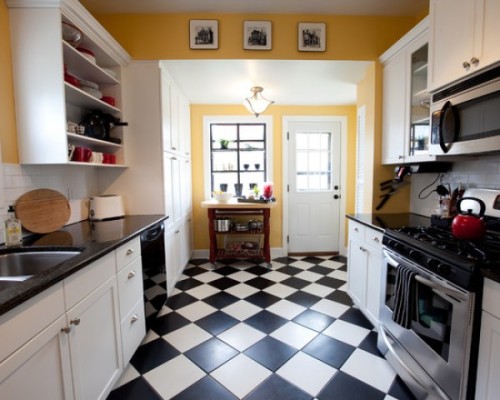
Laying contrasting tiles diagonally
Distinctive features
It should be noted right away that diagonal laying may not be suitable for every room.If it is cramped, then it is not advisable to use this method, since the visual area of \u200b\u200bthe room will be reduced. Moreover, even the slightest flaws in the room will become most noticeable. In many houses and apartments, the walls are uneven, and if you mount the tiles in this way, then this defect will become as pronounced as possible. If the room is very spacious, then you can safely resort to diagonal tiling.

Diagonal tile laying is suitable for spacious rooms
The pattern and texture of the finishing material will always be emphasized, which will allow you to focus on the decor elements you have identified that need to be highlighted. If you choose the right color, you can achieve almost any effect, while even minor planning flaws will be masked.
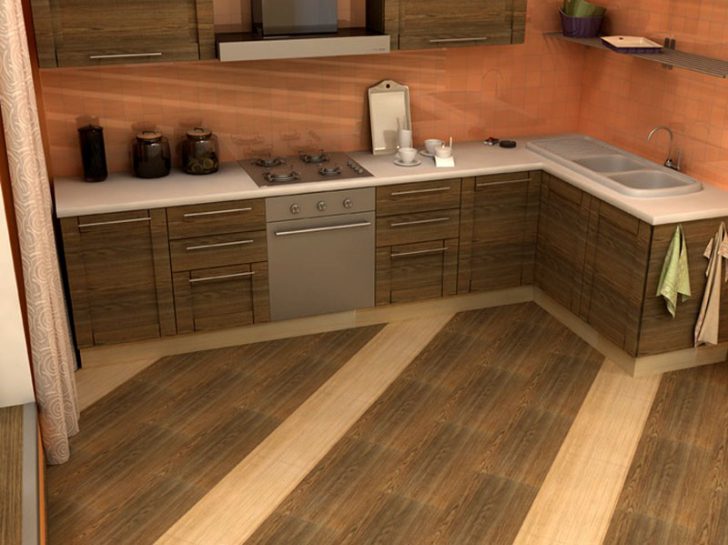
Diagonal tiles help hide layout flaws
If you lay light-colored tiles in this way, then the room will in any case become more illuminated and comfortable. The main feature of this method of laying tiles is that its rows are not located along one of the pair of walls, but at an angle, which in most cases is 46 degrees.
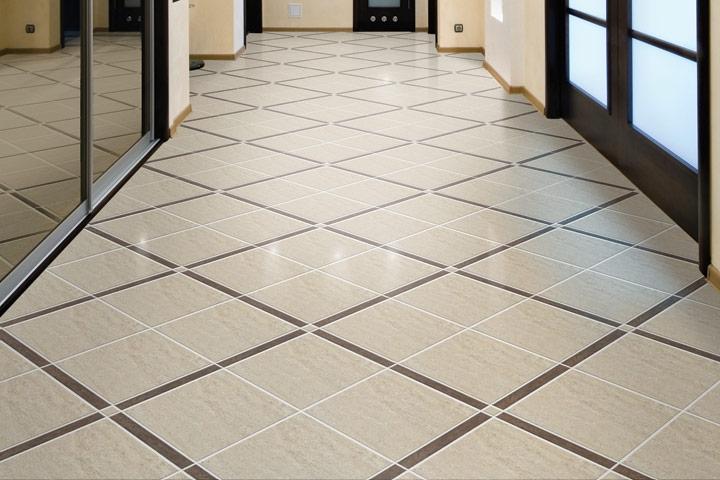
Light tiles laid diagonally will visually enlarge the room
The main difference between this method of laying tiles is that work does not start from a certain corner of the room, but exclusively from its center. Initially, precise markings should be applied along which whole tiles will be mounted. The rest will be trimmed and laid at the final stage of the work. It is important that the center of the room is initially determined correctly, as this will eliminate the asymmetry in the decorative flooring.
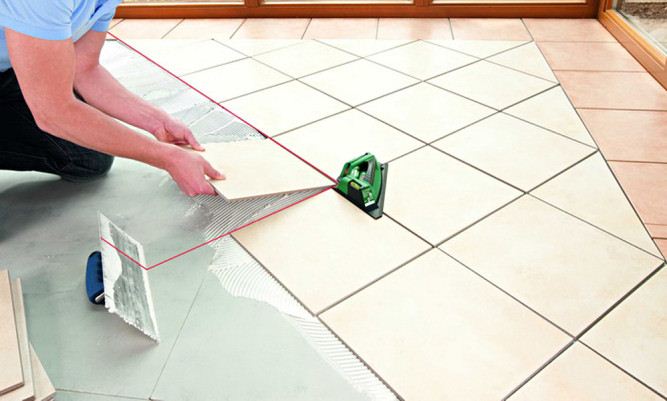
The process of laying tiles diagonally
Before cutting each piece, you need to make sure that the measurements have been taken properly, and only then proceed with cutting. Note that this type of tile laying implies the formation of not only even rows, but also the use of materials of different shapes, which allows you to combine them at the stage of decorating the floor area.
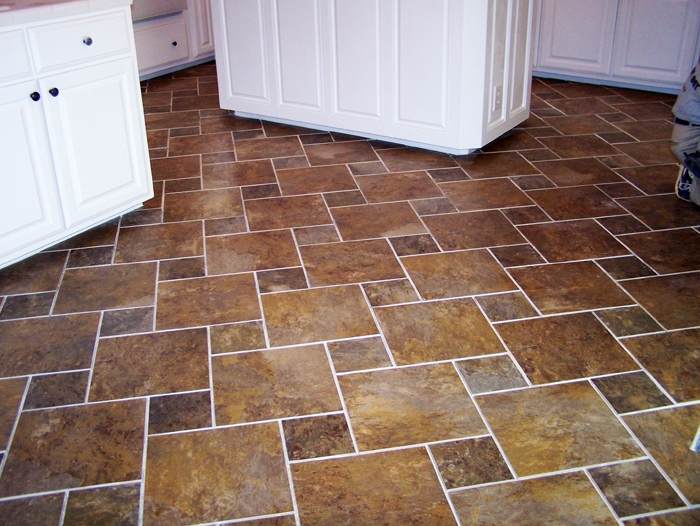
Combining tiles of different sizes
Most often, builders use traditional square tiles, as it is easier to work with. It can be large or small, which doesn't really matter. If you want to get an original pattern, then in this case it is advisable to use a rectangular or polygonal material. In relation to the walls, the tiles are mounted at an angle of 45 degrees, which allows achieving maximum proportionality and aesthetics of the coating.
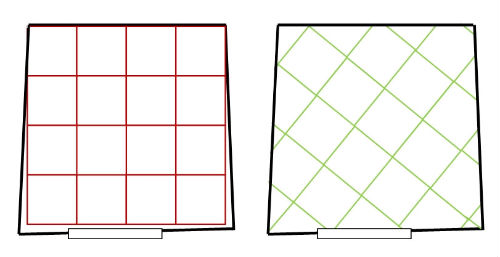
Tiles are laid at an angle of 45 degrees
Through the use of rectangular tiles, you can effectively model the space inside any room. It is enough, for example, to place this material with the long side to the narrow sides and this will make it possible to visually increase the space of the room. If you take the direction to a natural light source, then in this case the illumination of the room will improve. With this manner of laying tiles, you need to take into account, the proportions will seem somewhat elongated. If you change the angle at the marking stage in relation to the walls, then this will contribute to cardinal changes in the layout. It will be possible to effortlessly hide defects and even minor irregularities in the floor area.

With the help of diagonal laying, you can simulate space
Installation of tiles diagonally may differ from the traditional one in that it is performed in a run or seam to seam. Professionals agree that this should be done only by those who have considerable experience in performing tile work. In addition to the installation of entire tiles, special attention will need to be paid to trimming and fitting parts, which will be many.

Entrust diagonal tile laying to specialists
As for the flooring technology, it is almost the same. It will be necessary to pre-align and detailed preparation of the base before installation. There should be no traces of old finishing materials on the floor that will interfere with the quality of the work. If the surface is absorbent or weak, then it should first be primed in order to achieve maximum adhesion. Waterproofing must be carried out if the work is planned to be carried out in rooms with high humidity.
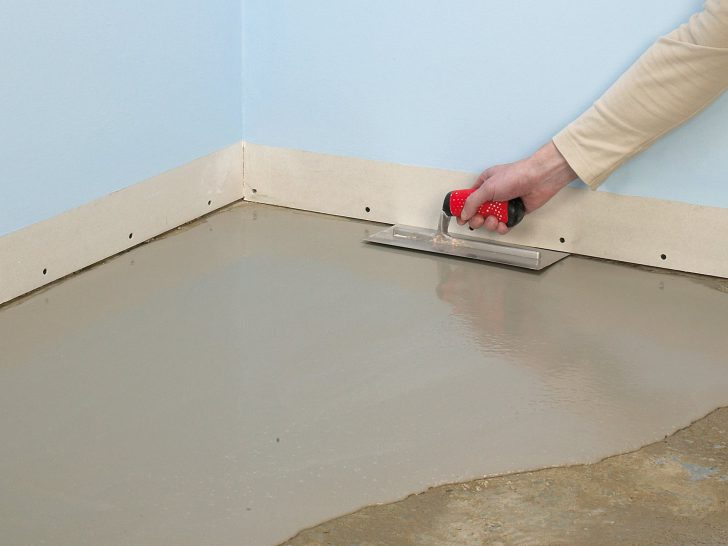
Level the floor before laying tiles
It is noteworthy that the installation of tiles on the floor in a diagonal direction to the walls can be done in different ways. The most common of them is when whole slabs of finishing material are mounted strictly according to the markup from the middle of the room, and only then work begins with trimmings, which will be placed around the entire perimeter of the room. As a rule, according to this technique, the floor zone is finished within small rooms, when it is precisely because of the small area that it is possible to achieve high accuracy.
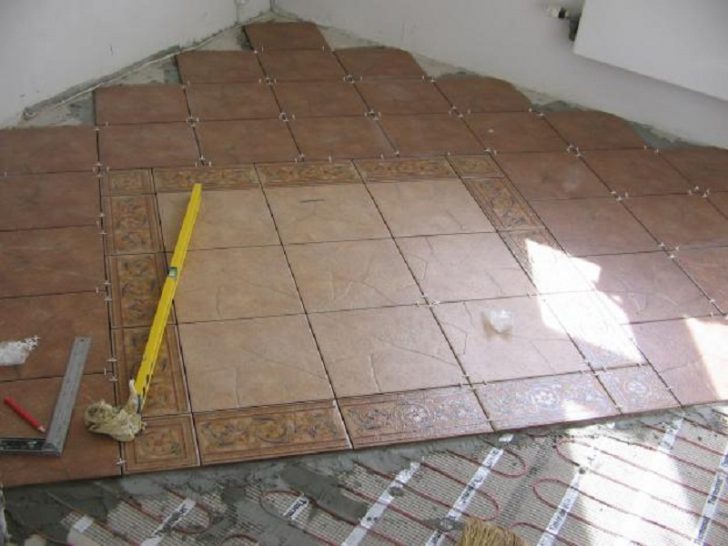
Laying tiles diagonally from the middle of the room
If you need to mount tiles in a large room using diagonal technology, then in this case everything will be much more complicated. First of all, you need to lay the first row, and only after that the second row will be created with cut out triangles, while each part should be mounted with the hypotenuse down relative to the walls of the room. After that, all rows are laid in a horizontal direction, and the corners will be in a straight vertical, only the side ones in the horizontal. You can also resort to the sloping row method, but this is not recommended for people who have never been closely engaged in tile work before. The technology itself is quite complicated, so it makes sense to turn to professionals.
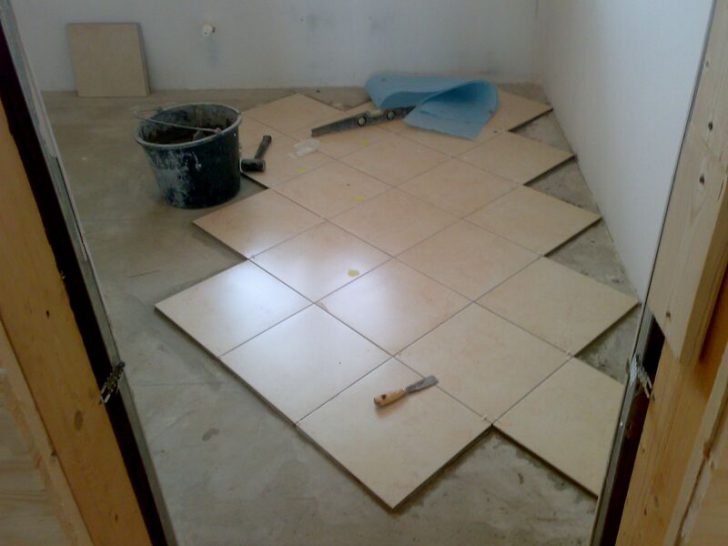
Laying tiles diagonally from the wall
Important nuances
This laying technology is distinguished by a mass of complexities and nuances that should be taken into account. For example, if you use a checkerboard pattern formed by traditional square tiles, then you need to avoid all sorts of curvilinear patterns. In large and small rooms, such a solution will not look harmonious. Also, professionals do not recommend resorting to different options for chess styling that can visually distort the proportions of the room or provoke the appearance of curvature of the floor area. From an aesthetic point of view, such decisions will not be justified, and the room will seem uncomfortable and cold. It will simply become unpleasant to be in such a room, so such measures are extremely inappropriate.
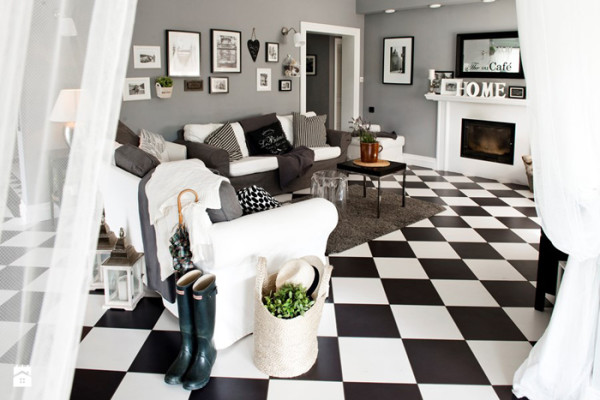
Diagonal staggered tiling is only acceptable for spacious rooms
In practice, when laying tiles diagonally, it is often necessary to resort to combined and modular technology. In this case, you have to work with material that has different shapes and sizes. It is worth noting that the modular version is perfect for small spaces. Often it can be implemented using square tiles of different sizes, as well as rectangular elements. They must be mounted in a repeating pattern.

Diagonal modular tiling options
Recommendations
If you decide to mount the tiles diagonally, then you need to follow certain rules. Remember that at the stage of performing this work, not only whole tiles will be used, but also their triangular halves. Any scraps that remain can be effectively used in the future. It is with quarters and triangles that empty corners can be trimmed, as well as spaces inside each frieze row. At the stage of calculating the amount of materials, not 10% should be added, as is customary to do by professionals, but 15.This error will be justified when it will be necessary to trim. If you will decorate the long wall of the room with patterns, then you need to start from its far side towards the exit.
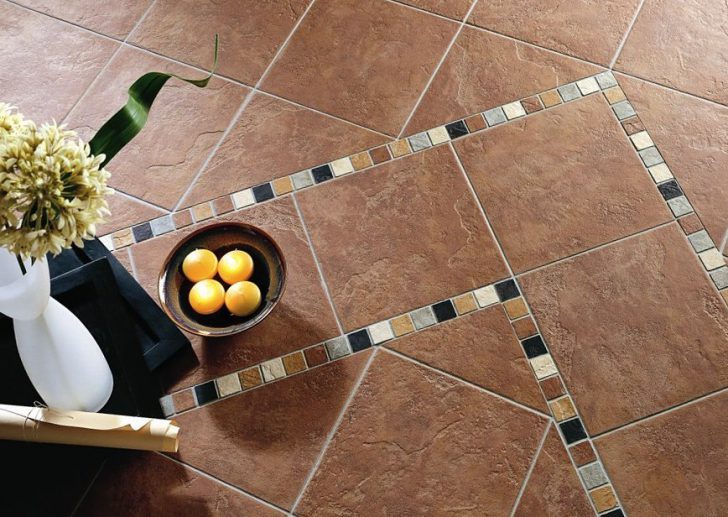
When counting the number of tiles, add 15%
If you need to achieve the most even laying of this finishing material, then it makes sense to use a long rail, since it will be mounted at an angle of 45 degrees relative to the walls and the frieze row. In addition, you need to regularly monitor the coincidence of perpendicular seams between the mounted tiles. It is important to check that there are no even the slightest distortions, row shifts or other errors, since it simply will not work to achieve the desired result.
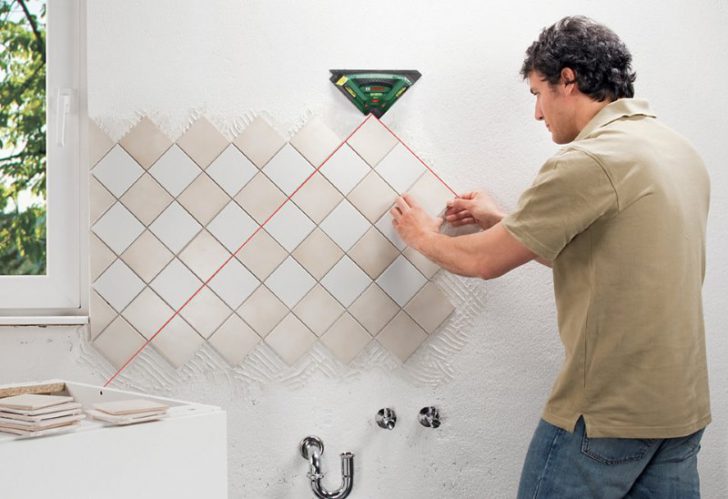
When laying tiles, make sure that there are no distortions
Otherwise, there are no difficulties and you can safely get to work. It is worth buying high-quality tiles and glue for laying them in order to be sure of the strength and durability of the floor area in a particular room in the future.
back to index ↑Photo gallery - laying tiles diagonally
Video
